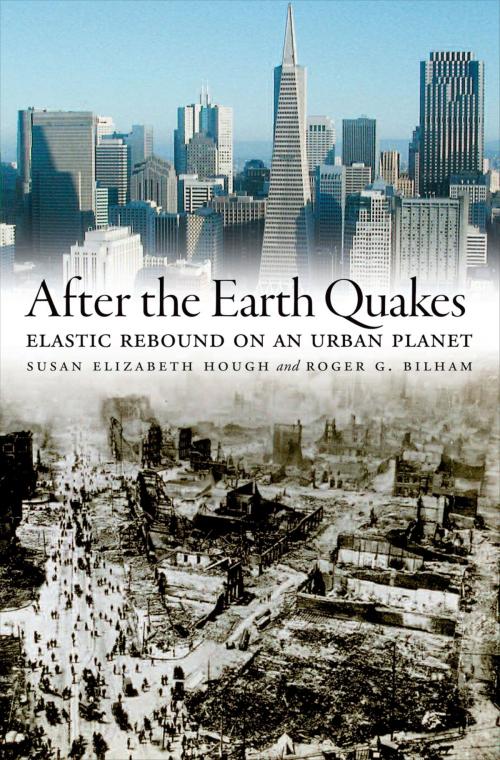After the Earth Quakes
Elastic Rebound on an Urban Planet
Nonfiction, Science & Nature, Science, Earth Sciences, Geophysics, Geology| Author: | Susan Elizabeth Hough, Roger G. Bilham | ISBN: | 9780190292522 |
| Publisher: | Oxford University Press | Publication: | November 24, 2005 |
| Imprint: | Oxford University Press | Language: | English |
| Author: | Susan Elizabeth Hough, Roger G. Bilham |
| ISBN: | 9780190292522 |
| Publisher: | Oxford University Press |
| Publication: | November 24, 2005 |
| Imprint: | Oxford University Press |
| Language: | English |
Earthquakes rank among the most terrifying natural disasters faced by mankind. Out of a clear blue sky-or worse, a jet black one-comes shaking strong enough to hurl furniture across the room, human bodies out of bed, and entire houses off of their foundations. When the dust settles, the immediate aftermath of an earthquake in an urbanized society can be profound. Phone and water supplies can be disrupted for days, fires erupt, and even a small number of overpass collapses can snarl traffic for months. However, when one examines the collective responses of developed societies to major earthquake disasters in recent historic times, a somewhat surprising theme emerges: not only determination, but resilience; not only resilience, but acceptance; not only acceptance, but astonishingly, humor. Elastic rebound is one of the most basic tenets of modern earthquake science, the term that scientists use to describe the build-up and release of energy along faults. It is also the best metaphor for societal responses to major earthquakes in recent historic times. After The Earth Quakes focuses on this theme, using a number of pivotal and intriguing historic earthquakes as illustration. The book concludes with a consideration of projected future losses on an increasingly urbanized planet, including the near-certainty that a future earthquake will someday claim over a million lives. This grim prediction impels us to take steps to mitigate earthquake risk, the innately human capacity for rebound notwithstanding.
Earthquakes rank among the most terrifying natural disasters faced by mankind. Out of a clear blue sky-or worse, a jet black one-comes shaking strong enough to hurl furniture across the room, human bodies out of bed, and entire houses off of their foundations. When the dust settles, the immediate aftermath of an earthquake in an urbanized society can be profound. Phone and water supplies can be disrupted for days, fires erupt, and even a small number of overpass collapses can snarl traffic for months. However, when one examines the collective responses of developed societies to major earthquake disasters in recent historic times, a somewhat surprising theme emerges: not only determination, but resilience; not only resilience, but acceptance; not only acceptance, but astonishingly, humor. Elastic rebound is one of the most basic tenets of modern earthquake science, the term that scientists use to describe the build-up and release of energy along faults. It is also the best metaphor for societal responses to major earthquakes in recent historic times. After The Earth Quakes focuses on this theme, using a number of pivotal and intriguing historic earthquakes as illustration. The book concludes with a consideration of projected future losses on an increasingly urbanized planet, including the near-certainty that a future earthquake will someday claim over a million lives. This grim prediction impels us to take steps to mitigate earthquake risk, the innately human capacity for rebound notwithstanding.















